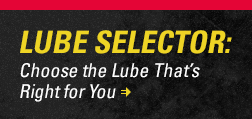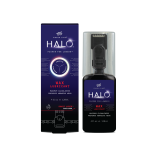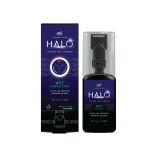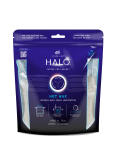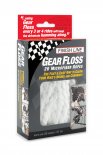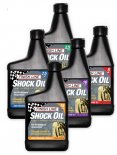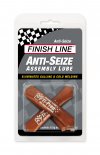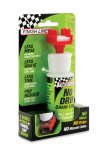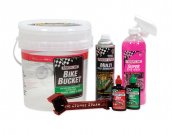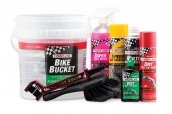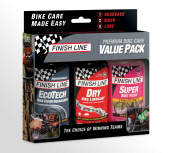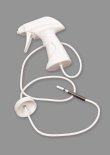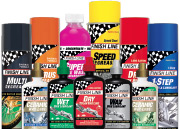Tech Tips
|
|
Braking Performance
Glazed, hardened, dirty, or misaligned brake pads account for nearly all loss of braking power problems. Keep the surface of your brake pads clean and fresh by using sandpaper or steel wool to scuff away any debris, and hardened glaze. Check the alignment. The pad should be toed in about 1/8" to first make contact with the rim at it's front half. Additionally, the pad should contact the center of the rim. The pad should never rub the tire or hang off the rim. In general, clean and inspect your brake pads every month. Brake pads are inexpensive and relatively easy to replace. You'll be amazed at the difference new brake pads make. Regularly clean your rims with Multi Bike Degreaser. Your pads will work better and last longer.
Bottom Bracket
Bottom brackets (B.B.s) are the bearing and spindle assemblies that your pedal crank arms spin upon. Because of their low and central location, they are constantly being exposed to the worst of contaminants. Many B.B.s feature sealed bearing assemblies. However it does help to keep an eye on their outer shields and keep them as clean as possible by wiping away any crud with a rag. Do not spray pressurized water at the shields.
Creaking Bottom Brackets
This annoying trait can be caused by a variety of things. This job requires special tools to fix and is best left to a professional mechanic.
Note Some B.B.s utilize semi-sealed or non-sealed bearing assemblies. They should be cleaned, inspected and re-greased about every 6 months. This job requires special tools so don’t cheat and use a hammer and/or pipe wrench. You’ll end up ruining your bottom bracket and they’re not cheap to replace.
Lubing Your Cables
Smooth operating cables are the life lines that keep your braking and shifting system working optimally. There are a variety of ways to lubricate your cables, from removing them, to just shooting a little lube into the ends of the cable housings. Depending on how much wet weather riding you do, your cables will require different amounts of attention. You should inspect and lube, if necessary, every 4 - 6 rides. For quick maintenance, squirt or drip a dry style lube into the open ends of the cable housings.
Note When it is time for a thorough cleaning and re-lubing of your cables, a trained mechanic should tackle the job. Unless you are experienced in removing your own cables, you can easily spend a few hours getting everything readjusted properly.
Lubing Your Derailleurs
Your derailleurs are just as important as your chain in helping to deliver those crisp, exact shifts that make cycling a true joy. The derailleurs shift your chain by using a system of springs and pivots. It is important to keep these springs and pivots well lubricated. They will require a shot of lube every 5 - 7 rides.
Note Gears (sprockets) do not require any special lube application. The gears receive sufficient lubrication from the chain as it runs through them. Excessive lubricant on the gears will attract dirt and eventually degrade the performance of your drivetrain components.
Creaking Stem
Sometimes, the handlebar stem will "creak". This is usually caused by one of two things: either dirt that has worked its way down between the stem and the fork’s steerer tube or the stem has come slightly loose. To fix this, loosen the stem, remove it from the steerer tube, and clean it using Citrus Bike Chain Degreaser or Multi Bike Degreaser. Reassemble and tighten to correct torque specification.
Note Some high-end stem mounting designs may require special tools or unique reassembly torques. Check with your local shop if you have any questions.
Caring for Front and Rear Hubs
Some hubs have open bearing assemblies with only a dust shield between them and the elements. You’ll need to routinely inspect, clean and re-grease these type of hubs. In general, inspect, clean and re-grease hubs every 4 months. Carefully disassemble the hub and clean with Citrus Bike Chain Degreaser or Multi Bike Degreaser. Inspect all components and particularly look for pits, cracks, or flat spots in the ball bearings and race surfaces. Generously apply Finish Line Premium Grease to the bearing and race surface, then reassemble. Adjust so bearings run smooth and free, but allow no side-to-side or up-and-down play.
Note Many hubs now feature sealed bearing assemblies. Just keep their outer seals clean with an occasional rag wipe. Don’t spray water or degreaser into your bearings. Properly cared for sealed bearing hubs will last a long time.
Lubing Your Brake & Shift Levers
All brake and shifter levers work by using springs and ratchets that arc on pivots. You will need to lube your levers every 6 months.
Cleaning: Your levers will require no more than a quick cleaning. A squirt of bicycle degreaser, a quick scrubbing with a brush, and/or wipe with a rag should do it. If mud and sand have worked their way into the heart of your brake and shifter levers, it is recommended that you have a trained mechanic tackle the job. Disassembly and reassembly of these components can be quite complicated.
Lubing: Run your levers through their full range of motion while squirting a little lube into the spring and ratchet mechanism. Place a drop of lube onto the pivot and work it into the joint.
Note Like your derailleurs, it may be easier to access the lube points on your levers by turning your bike upside down.
Quick-Release
Position your front and rear wheel quick-release levers opposite the drivetrain side of the bike. The rear lever should have a tightly closed handle that runs parallel to the chainstay tube. The front lever should be pointed up, tucked next to the fork. These positions will prevent a glancing blow, from a trailside obstacle, from accidentally opening the levers. If you’re new to quick-release axles, make sure your bicycle dealer shows you how to properly use and tension the levers.
Grease your Seat Post
Apply a thin layer of Finish Line Premium Grease to your seat post, where it slides and mounts into the frame. This will keep the seat post from galvanically cold-welding itself within the frame.
